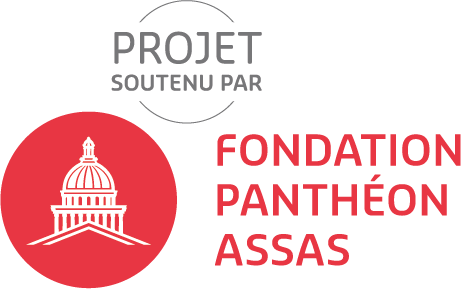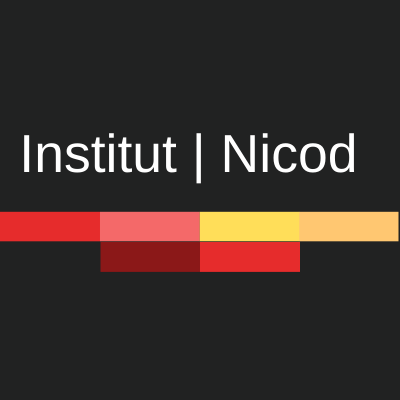Abstracts 2025
Talks by:
Despoina Alempaki & Valeria Burdea & Daniel Read
*
Galit Ashkenazi-Golan *
Anton Benz *
Ulrich Berger *
Heather Burnett *
Keny Chatain *
Fryderyk Falniowski *
Danny Fox & Roni Katzir *
Aviad Heifetz *
Ziv Hellman *
Josef Hofbauer & Christina Pawlowitsch * Philippe Jehiel & Aviman Satpathy *
Panayotis
Mertikopoulos *
Maël Le Treust *
Léo Migotti Ramponi & Benjamin Simmenauer *
Philip Reny *
Stéphan Sémirat
*
Juha Tolvanen
*
Yannick Viossat *
Simon Weidenholzer *
Jörgen Weibull
Despoina Alempaki & Valeria Burdea & Daniel Read
"The Menu of Deception"
Abstract: This study examines how the salience of alternative possible messages affects how individuals interpret pre-play communication in strategic decision-making contexts. In particular, we investigate whether people's failure to recognize the predictive power of a counterpart’s statement can be explained by a lack of awareness about the set of alternative statements the counterpart could make. This is because greater awareness facilitates comparison of the actual statement with the alternatives, making it easier for the receiver to assess the strength of the given statement. Across two experiments inspired by the Golden Balls game - a variant of the prisoner's dilemma -, participants evaluated the likelihood of cooperation based on strong or weak messages signalling cooperative intentions. Results show that when individuals are unaware of alternative messages, they do not accurately predict the behavioural differences between strong and weak signals. However, providing information about alternative messages significantly improves judgment accuracy by reducing prediction errors. These findings highlight the importance of designing communication frameworks and information strategies that enhance individuals' ability to assess intentions, offering valuable insights for organizations and policymakers to mitigate deceptive practices.
Galit Ashkenazi-Golan
"The Role of Signaling and Information in Multi-Agent Reinforcement Learning"
Abstract:
What does a learning agent need to know to do well? Does he need to know they are playing a game? What is the trade-off between "knowing" and "estimating."
What is the role and what are the interpretations of signals observed as the game unfolds?
How to train a "smart" agent (sequential training vs. opponent modeling and beliefs)? And is it always good to be "smart"?
Anton Benz
"Rational Interaction and Conversational Implicatures"
Abstract:
Implicatures are one of the central topics in pragmatics. Paul Grice considered them to be the product of rational language use. It was therefore no surprise that they were among the first topics to be addressed using game-theoretical methods. Implicatures were explained as equilibria in signaling games, in which interlocutors balance informativity and the effort required to communicate the intended meaning. A persistent challenge has been scaling up these models from quantity implicatures in simple sentences like “Some children found their marble” to more complex sentences with embedded quantifiers, such as “Some of the children found some of their marbles.” Proposed solutions to this challenge include the Iterated Best Response model (Franke 2009) and the lexical uncertainty model (Bergen et al. 2016; Potts et al. 2016). However, even these models would require additional mechanisms to handle contexts involving more complex alternatives, such as “Some of the children found all of their marbles and some found some.” It has also been argued that models based on iterative reasoning fail to account for certain experimental data (Asherov et al. 2024), and that more rule-based approaches may be necessary (Fox & Katzir 2021). In this talk, I present a cognitive-algorithmic generalization of the error model (Benz 2012), and test it against data from Benz & Gotzner (2021) as well as two further experiments that modify their original setup. In these experiments, participants produce complex sentences as descriptions of visually presented information. The model explains how implicated meanings emerge as side effects of 5 rules for verbalizing visual input.
Ulrich Berger
"Gossip in Evolutionary Games"
Abstract:
Gossip allows individuals to acquire information about the past behavior of others. This can be used to predict their future behavior and therefore to condition own actions on expected actions or reactions of future interaction partners. We study how various forms of gossip influence the outcome of interaction in simple evolutionary games via this channel.
Heather Burnett
"The Role of Language in the Identification of Equilibria in Competitive Video Games"
Abstract:
An important concept in competitive multiplayer video games (also known as esports) is the meta. Often described through the backronym “Most Effective Tactics Available”, the meta is usually presented as referring to a dominant strategy in the competitive game, i.e. the strategy that, for all players, results in the best outcome for the player, regardless of their opponent’s strategy (Chitayat et al. 2023). Indeed, existing models of the evolution of video game metas focus on the discovery of a new meta’s dominance and players’ subsequent strategy change to it (Thaicharoen et al. 2023). At the same time, esports scholars have also highlighted that the meta has a social aspect: not only must it be dominant, it must also be a strategy that is “popular” or “fashionable” among the community of players (Taylor 2012, Kokkinakis et al. 2021). Some even emphasize how the community’s perception of the strategy’s optimisation is key, perhaps even more important than the actual optimisation itself (Kokkinakis et al. 2021). In this presentation, I argue that the social component of the meta makes it more akin to a social norm in the sense of Bicchieri (2006, 2016): a strategy played in a mixed-motive game in which the desire to conform to the community’s expectations (i.e. play the meta), and in doing so contribute to the collective goal of community building, may possibly be at odds with self-interest (i.e. playing an “off-meta” strategy that the player personally prefers). In Bicchieri’s framework, social norms transform mixed-motive games into coordination games, whose solutions require points of coordination for equilibria (Lewis 1969). I argue that, in esports, the way that such points of coordination emerge is through language: specifically through discourses about the meta by players and commentators online. I support this argument through a detailed study of the evolution of the strategies and discourse about the meta in a 6 week tournament of the Elden Ring Bingo competitive game (see Lipscombe 2025).
Keny Chatain
"Gricean Equilibria in Lewisian Signaling Games"
Abstract:
The Gricean tradition (Grice 1957, 1975) and its neo-Gricean extensions (Horn 2004; Levinson 1983; Sauerland 2004; Spector 2007) distinguish between a literal meaning, given by a convention of language, and a pragmatic meaning, additional inferences hearers draw from utterances in context. In these views, the pragmatic meaning is derived from the literal meaning and conversational maxims such as the maxim of Quality or the maxim of Quantity. Game-theoretic reconstructions of Gricean reasoning (Asher, Sher, and Williams 2001; De Jager and Van Rooij 2007; Jäger 2007; Rothschild 2013; Van Rooij 2003) typically embed the maxim of Quality as a constraint on possible moves by the speaker. In other words, literal meaning is given ex ante. In this work, we drop this assumption and ask whether both the Quality and Quantity maxims can be emergent properties of an equilibrium in the original Lewisian signaling game (Lewis 1969), with no meaning given ex ante. This amounts to asking whether a distinction between literal meaning and pragmatic meaning can naturally arise in a Lewisian signaling game. Focusing on simple cases of scalar implicatures, the analysis reveals that under loose and reasonable assumptions about speakers’ and hearers’ payoffs and beliefs, there may be no equilibrium in which Gricean maxims are obeyed. This result challenges the notion that these maxims are natural consequences of principles of cooperation and rationality. Second, speculatively, we ask whether, in such equilibria, one may still recover a distinction between literal meaning and pragmatic meaning, using perhaps non-standard maxims of conversations.
Fryderyk Falniowski
"Stability in Chaos: The Chaotic Tango of Heterogeneous Agents in Population Games"
(based on joint work with Jakub Bielawskia, Thiparat Chotibutb, Micha Misiurewiczc, and Georgios Piliourasd)
Abstract:
Reinforcement learning is a powerful tool that helps describe the long-term behavior of agents in games where the assumption of rationality or game knowledge may be inappropriate. Its applications span many research fields and have been used in a variety of contexts, with particular emphasis on congestion games and signaling games (Skyrms). We investigate a class of discrete-time multi-agent reinforcement learning (MARL) dynamics in population games. Despite the presence of static Nash equilibria, we demonstrate that MARL dynamics with heterogeneous learning rates can deviate from these equilibria, exhibiting instability and even chaotic behavior and resulting in increased social costs. Remarkably, even within these chaotic regimes, we show that the time-averaged macroscopic behavior converges to exact Nash equilibria, thus linking the microscopic dynamic complexity with traditional equilibrium concepts. Our results give another explanation of famous El Farol Bar problem.
Danny Fox & Roni Katzir
"Logic and Probability in Pragmatics"
Abstract:
"Questions, Answers, and Pragmatic Oddness"
Abstract:
Aviad Heifetz
"Evolving Conversations: Signs, Gestures, Symbols"
Abstract: We employ a dynamical system approach to study evolving conversations, along which what the parties exchange range from gestures, via symbols, towards abstract signifiers. Along a conversation, each interlocutor continuously alters her words in response to the other's most recent words. We prove that as the exchange matures from gestures via symbols towards abstract signs, the orbit of the conversation remains the same even if it may change direction and speed, and the interlocutors' values of what they exchange remain intertwined.
Ziv Hellman
"Fake News and Delusional Dialogues"
Abstract:
We consider Bayesian dialogues in which the truth axiom may
not obtain. A player is delusional at a state of the world if the states
he considers possible at that state exclude the true state. In the twoplayer case, if one player’s delusion is credible to the other player
under a partitional model, a delusional player can cause the other
player to become delusional at the conclusion of a Bayesian dialogue,
in which case there is common knowledge amongst the players that
they ascribe equal probability to an event, but this agreed probability is wrong. Alternatively, a player may maliciously employ ‘fake
news’, misrepresenting an announcement in a Bayesian dialogue to
cause the other player to become deluded. In many player situations,
delusion or fake news can cause schisms in a market, with differing
groups of players believing different states are true. This can facilitate
trade even under initial conditions of common priors.
Josef Hofbauer & Christina Pawlowitsch
"The Anatomy of Costly Signaling: The Case of Two-Sided Costly Signals with an Application to Politeness in Language"
Abstract:
We derive properties of the replicator dynamics and the best-response dynamics for the general class of signaling games with two types, two signals, and two actions (Hofbauer and Pawlowitsch 2025). Then, we zoom in on the special case that a signal that is costly to the sender imposes also a cost on the receiver if they accept the social exchange at stake. Interestingly, this cost for the receiver has the effect of increasing the informativeness of partially revealing equilibria in which the costly signal does not fully reveal the "high" type but only pushes the receiver's belief on the high type up to the critical value where the receiver is indifferent between accepting or not the social exchange at stake. We illustrate this in the context of politeness in language.
Philippe Jehiel & Aviman Satpathy
"A Coarse Q-Learning Model for Word Reinforcement
in Contextual Language Learning"
Abstract:
Our research aims to extend the Coarse Q-learning (CQL) model - originally
designed to capture reinforcement learning by boundedly rational decisionmakers employing coarse categorization - to the domain of contextual language learning. In this reformulated approach, words are conceptualized
as coarse categories that aggregate multiple potential referents or actions,
thereby serving as the primary units of linguistic representation. This perspective is motivated by the observation that, much like decision-makers who
classify a large set of alternatives (e.g., as tough, kind, or neutral), language
users initially acquire words as broad classes. Although combinatorial processes arising from learning and experience later refine these classes, their
coarse structure remains fundamental.
Panayotis
Mertikopoulos
"Online Learning in Games: Old Ideas, New Results"
Abstract:
In this talk, I will discuss some recent—and some not-so-recent—results concerning the long-run behavior of online learners that are involved in an unknown repeated game, that is, when each player is not necessarily aware of every other player's actions or objectives. I will begin with an overview of some widely used algorithms based on the idea of "regularized learning", paying special attention to the information available to the players— from full information to bandit, payoff-based feedback (that is, when each agent can only observe their own payoff and has no further information). In this general context, I will describe a series of results characterizing the possible outcomes of the process, both positive and negative—from convergence to a Nash equilibrium, to cyclic, non-convergent, (almost) periodic behaviors.
Maël Le Treust
"Linking Mechanisms with Few Messages"
(based on joint work with Tristan Tomala)
Abstract:
We investigate the mechanism design problem formulated by Jackson and Sonnenschein in 2007, where we consider that agents do not have enough messages to reveal their type. This problem is deeply related to the mismatched distortion-rate problem formulated by Lapidoth in 1997, in the Information Theory literature. The characterization of the set of single-letter incentive compatible distributions is an open problem. We provide inner and an outer bounds and we show these bounds match in several special cases.
Léo Migotti Ramponi & Benjamin Simmenauer
"Fashion Pragmatics: The Meaning of Outfits as a Function of their Cost"
Abstract:
In 2023, the French Minister of Education banned the "abaya"; a long, covering female dress from the Middle East, following on the 2004 law banning "conspicuous signs of religion" in schools, prohibiting signs or clothing that "students use to manifest their religious affiliation." This strongly suggests that A) clothing has meaning, i.e. it conveys non-trivial information about something else than its form such as the wearer’s condition, and B) this meaning is derived from the wearer’s intentions, i.e. observers are trying to retrieve which intention is most likely given some properties of an outfit in each context. Still, many clothing outfits are ambiguous: a long covering black dress could simply convey modesty (as the intention to hide one’s body shape), and not a religious statement. Contemporary fashion studies generally postulate that the meaning of clothes is encoded at the level of cultural communities (Breward & all 2023): presumed cases of ambiguities would be resolved by identifying which cultural context holds, and in turn which lexical rules for clothing interpretation should be followed. We contend that, in cases similar to the "abaya" dress, this approach is not efficient: observers are hardly ever aware of the different cultural conventions at stake, and do not solve ambiguous cases by getting acquainted with them. Instead, we assume that the main explaining factor is a pragmatic one, namely the perceived “cost” of an outfit (in other words, the amount of resources or efforts it takes to wear it). According to the neo-Gricean principle of cost/informativity ratio optimization, one only uses a costly signal if one cannot express the intended meaning with a less costly alternative choice. Consequently, if an outfit, say, a long covering dress, is perceived as costly, it will tend to trigger a “special” interpretation (in 2023 France, a religious affiliation claim), whereas if it is perceived as a cheap signal, it will tend to be construed more standardly (in 2023 France, a modesty signal). This talk will aim at introducing a framework for the interpretation of clothing items, based on the Rational Speech Act formal framework, and will include some preliminary experimental data showing 1/ that cost perception is indeed a good predictor for the interpretation of potentially ambiguous outfits, and 2/ more broadly, that RSA-like formal equations constitute a promising tool to model how observers make sense of non-linguistic signals like clothing items.
Philip J. Reny
"Natural Language Equilibrium II
"
Abstract:
In “Natural Language Equilibrium I,” we studied the effect of a commonly understood language on signaling game equilibria. Under the convention that off-path statements are interpreted as true unless they can be seen as a rational attempt to deceive, we showed that, generically, only stable equilibrium outcomes can arise. Here, we strengthen the convention by also requiring that any statement must be interpreted as true unless this would make the statement a rational deception. This strengthening refines equilibria in pure communication games and has a simple language-evolutionary motivation.
Stéphan Sémirat
"Selecting Equilibria in Single Peaked, Single Crossing
Sender-Receiver Cheap Talk Games with Finitely Many Types"
Abstract:
I study pure perfect Bayesian equilibria (PBE) in single peaked, single crossing, sender-receiver games with finitely many types for the sender. PBE in these games are characterized by incentive compatible (IC) partitions of the set of sender’s types, in which no
type prefers to be pooled with types it is not currently pooled with, given the decisions
of the receiver, optimally chosen at each cell of the partition. I propose a weaker version of Farrell’s (1993) neologism proof criterion, by restricting credibility to sets of types separated by a family of interim better response dynamics initialized at the truthful partition. Accordingly, a putative equilibrium fails to satisfy a no incentive to truth imitate (NITTI) criterion if at least one type has strict incentives to deviate to the decision it obtains by being initially truthful, but ultimately identified through the dynamics. I show that NITTI selects a single IC partition. By contrast to existing refinements (e.g. the No Incentive To Separate (NITS) criterion of Chen, Kartik and Sobel's (2008)), the result obtains without imposing the standard regularity condition (namely, Condition (M) in Crawford and Sobel (1982)) usually assumed in order to achieve uniqueness in this family of games.
Juha Tolvanen
"Strategic Communication and Algorithmic Advice"
(based on joint work with Emilio Calvano and Clemens Possnig)
Abstract:
We study a model of communication in which a better-informed sender learns
to communicate with a receiver who takes an action that affects the welfare of
both. Specifically, we model the sender as a machine-learning-based algorithmic
recommendation system and the receiver as a rational, best-responding agent that
understands how the algorithm works. The results demonstrate robust communication, which either emerges from scratch (i.e., originating from babbling where
no common language initially exists) or persists when initialized. We show that
the sender’s learning hinders communication, limiting the extent of information
transmission even when the algorithm’s designer’s and the receiver’s preferences are
aligned. We then show that when the two are not aligned, there is a robust pattern
where the algorithm plays a cut-off strategy pooling messages when its private information suggests actions in the direction of its preference bias while sending mostly
separate signals otherwise.
Yannick Viossat
"Evolution and learning in games: a non-technical introduction"
Abstract:
This talk attempts to summarize in non-technical terms some of the main motivations, tools and results of evolutionary game theory and related learning models. After recalling the static concept of evolutionary stable strategy, we'll focus on game dynamics arising from natural selection, imitation, myopic optimization, or reinforcement learning. Some of the questions we will discuss are: What do evolutionary games model? What are possible endpoints of evolution in games? Does evolution tend to wipe out irrational behaviours? Do game dynamics tend to converge to some equilibria, and if so which ones? What are the differences between game dynamics arising in evolutionary biology and in social sciences? How does evolution of behavior in large populations relate to or differ from reinforcement learning models? When playing the same game repeatedly, what performance can be expected from a ``good" learning method? And what is there to take for linguists?
Jörgen Weibull
"Sender-Receiver Games and the Emergence of Language"
Abstract: In this preliminary study, we examine the potential for certain tools in game theory to explain the emergence of meaning of signals in simple sender-receiver games. It is known that neither Nash equilibrium nor evolutionary or neutral stability gives full support to the emergence of meaning. We explore the power of two recent game-theoretic solution concepts, that of “game blocks and solid outcomes” (Ritzberger, Weibull & Wikman 2025) and “tenable strategy blocks and settled equilibria” (Weibull and Myerson 2015). In 2x2x2 games both work well. However, when there are more messages than states of nature, then only the latter has enough cutting power for signals to acquire meaning.
Simon Weidenholzer
"Co-existing Platforms in
Multi-Layer Network Formation"
Abstract:
We develop a model of non-cooperative multi-layer network formation where players
choose among two platforms (layers) but may -at an additional cost- also use both. Players
may only form costly links to others who are on the same platform. Links allow players
to access non-rival benefits such as information. We study conditions under which multiple
platforms may co-exist and discuss the implications for the resulting network. Co-existence
can occur if some players find it worthwhile to use multiple platforms, thus relaying benefits
to those who only use one. We further pursue extensions and discuss applications of our
model.
|





